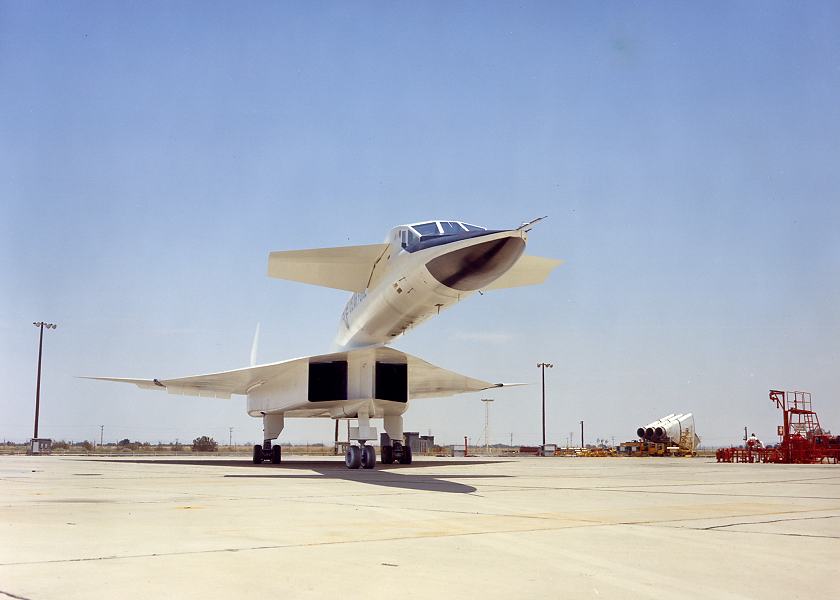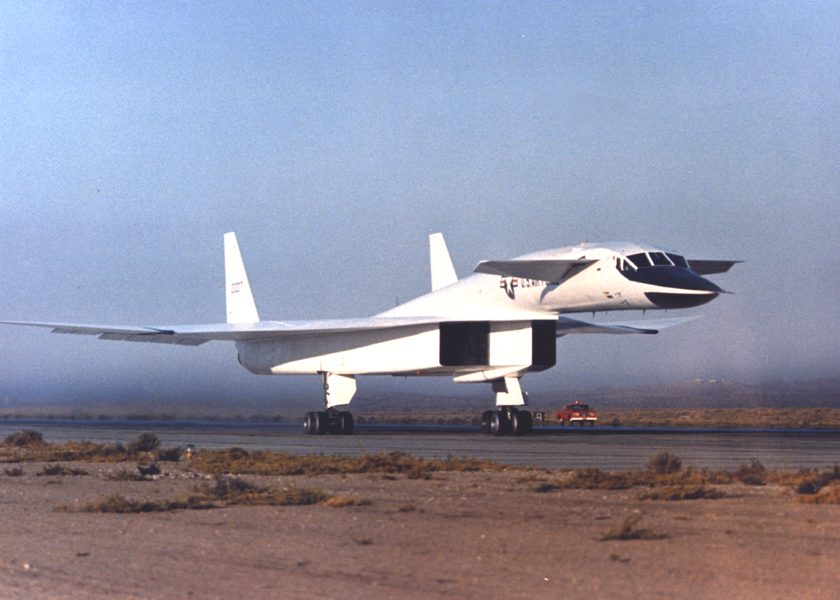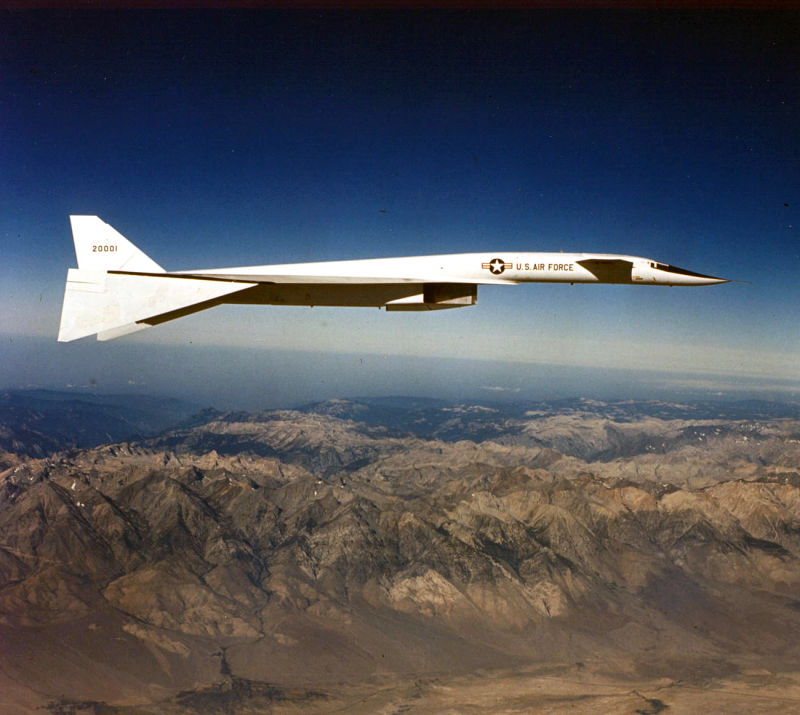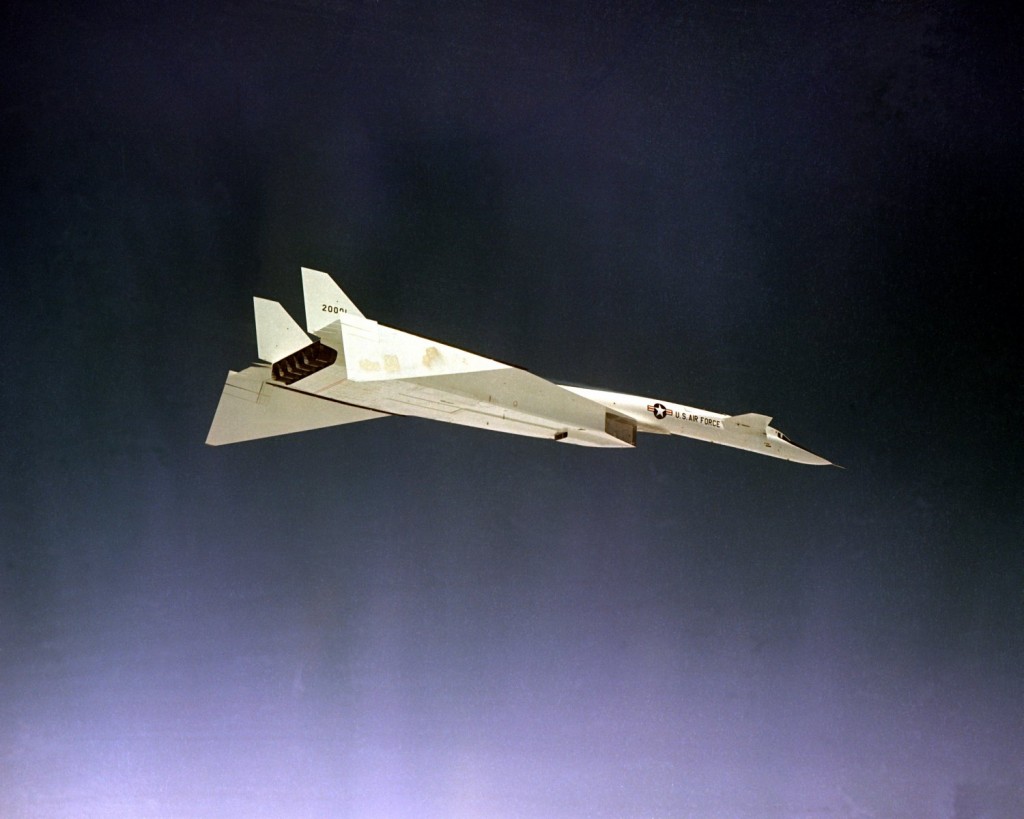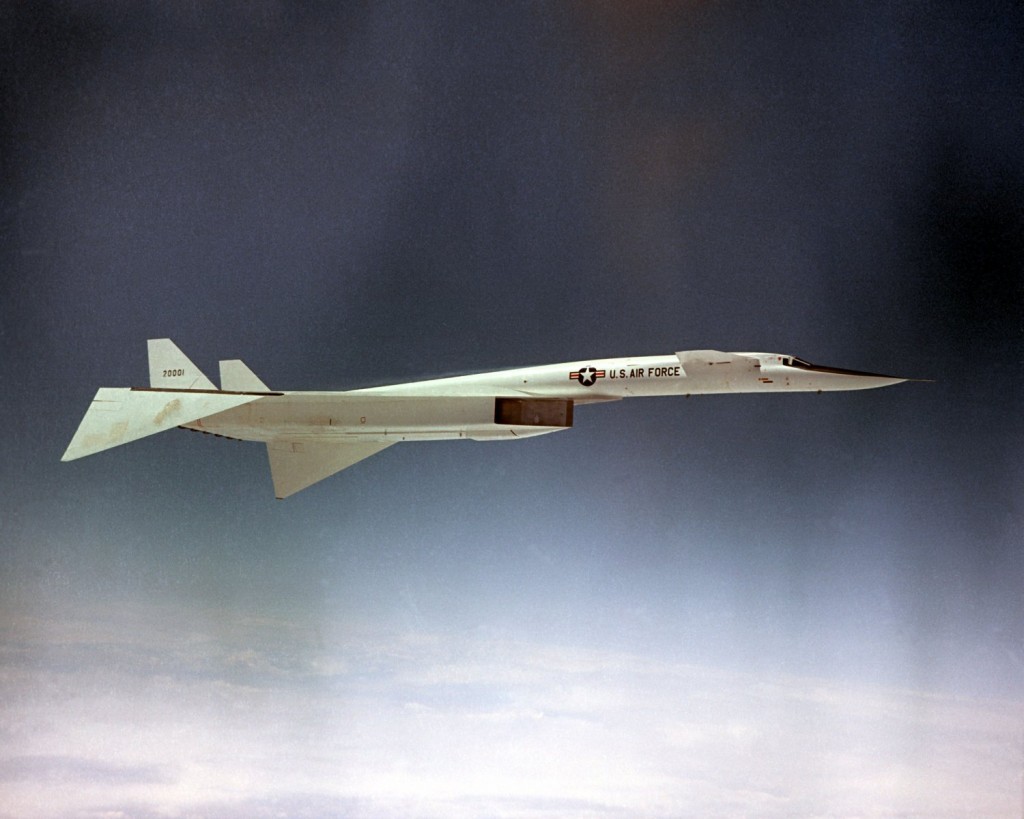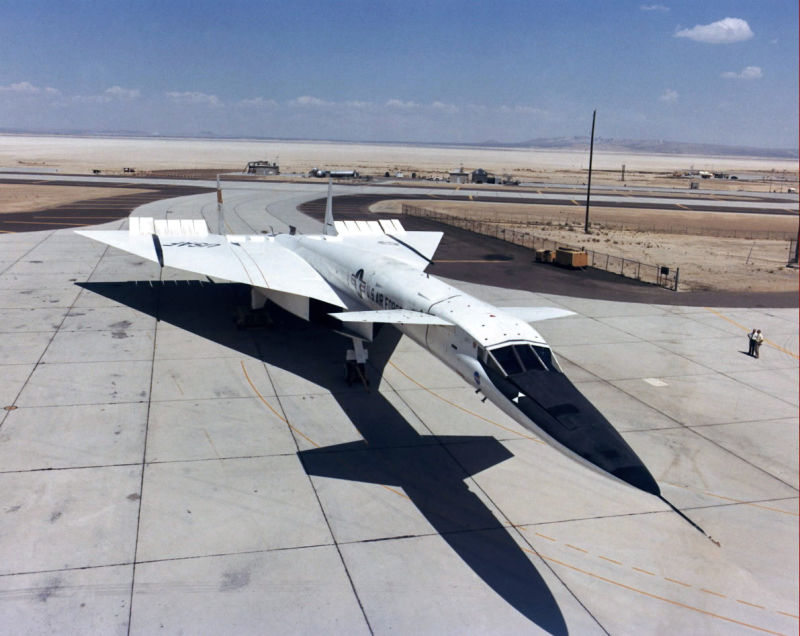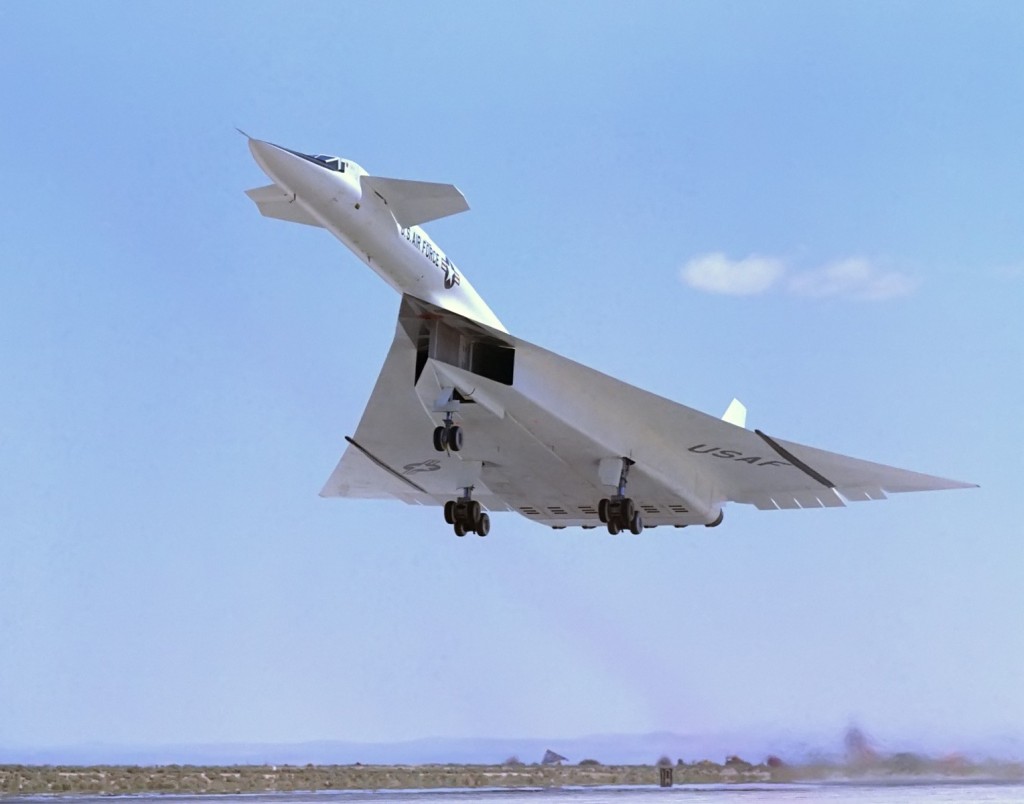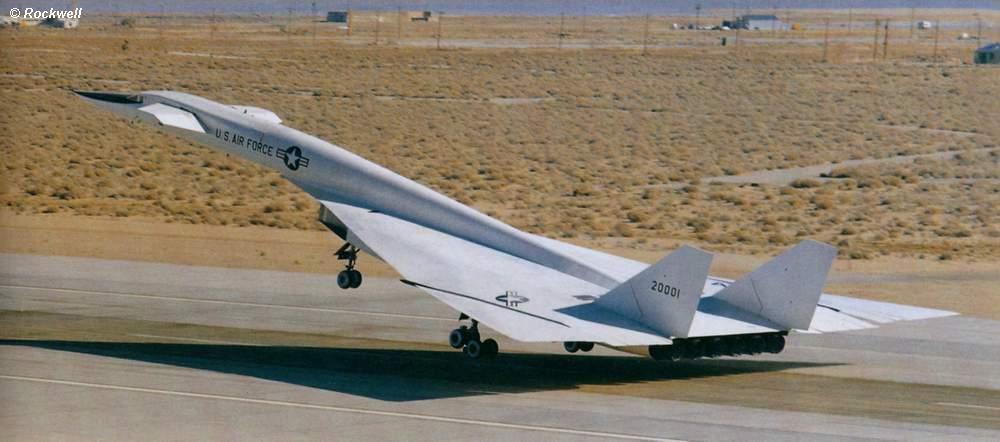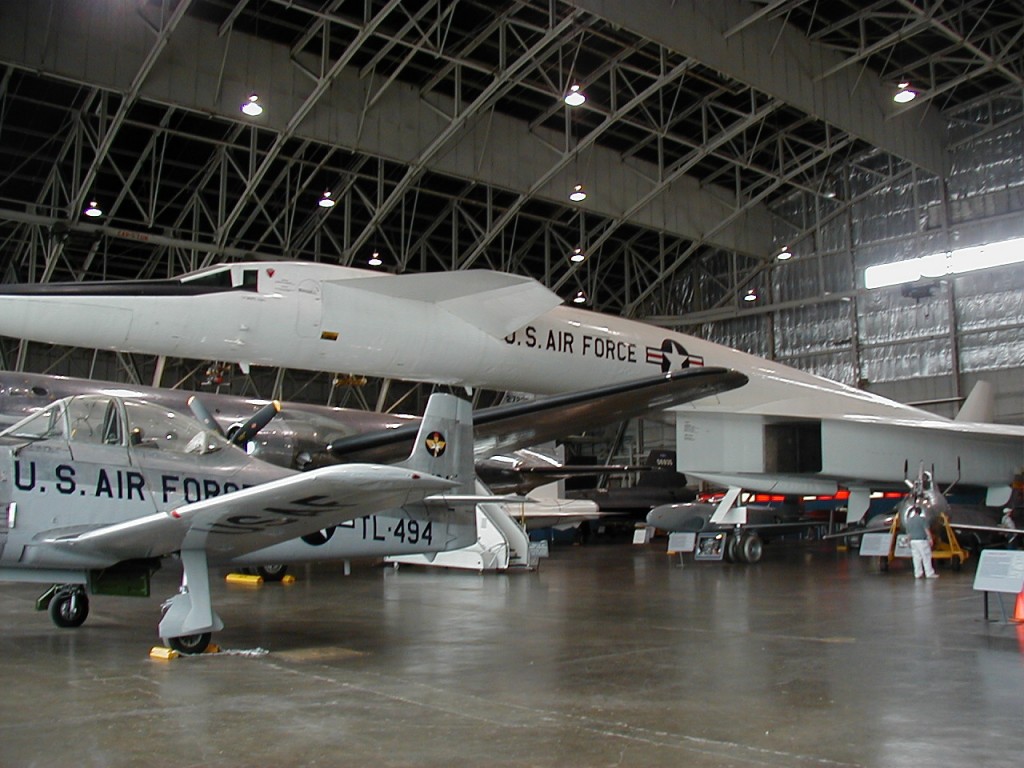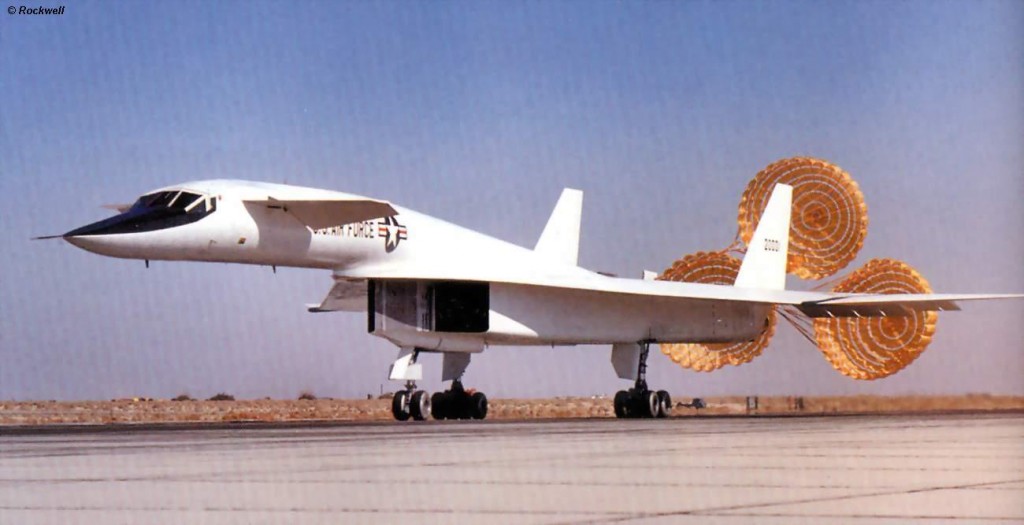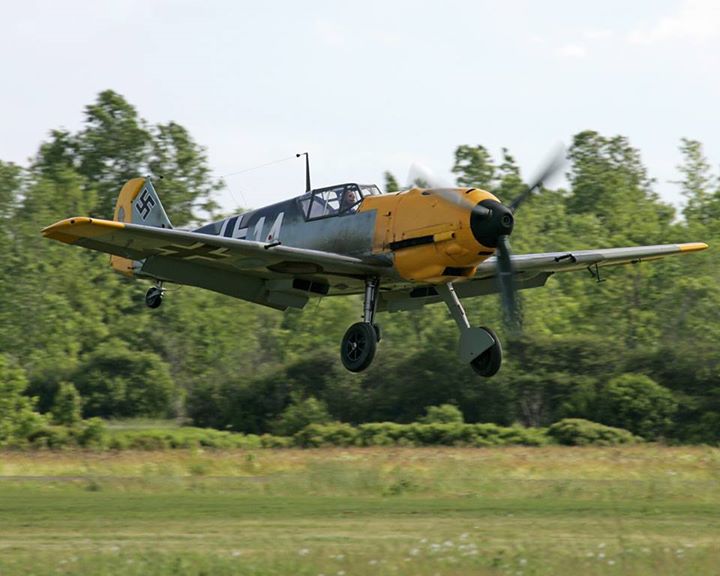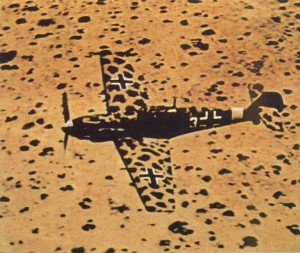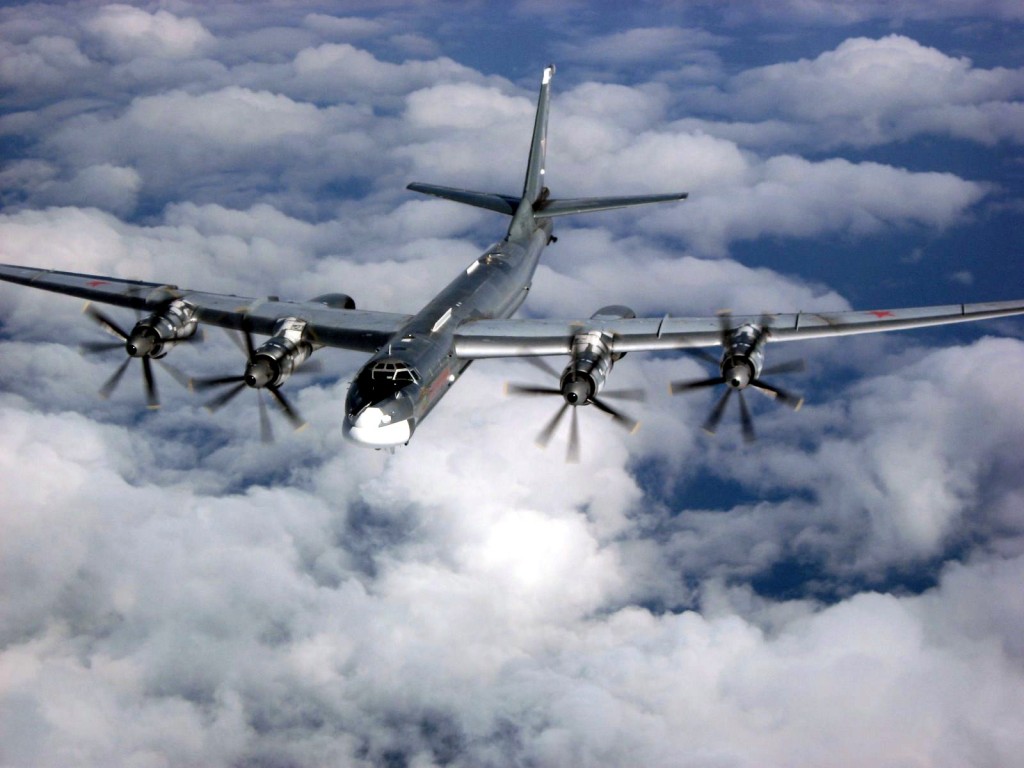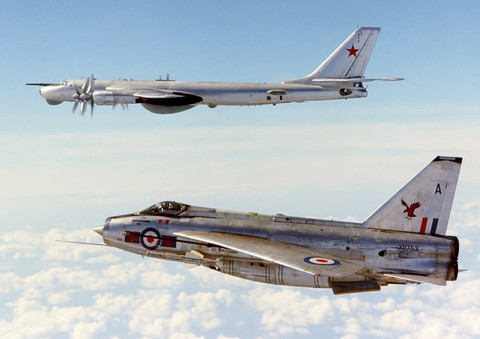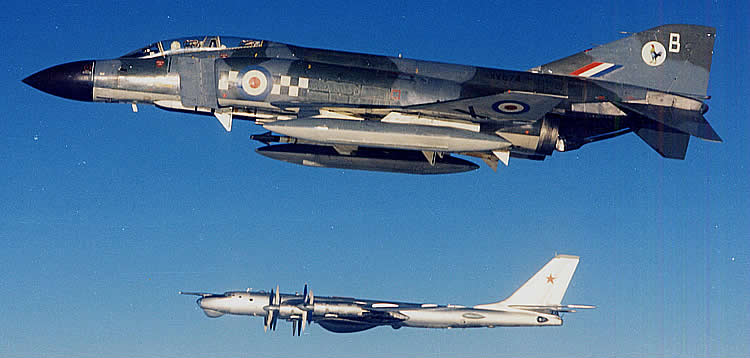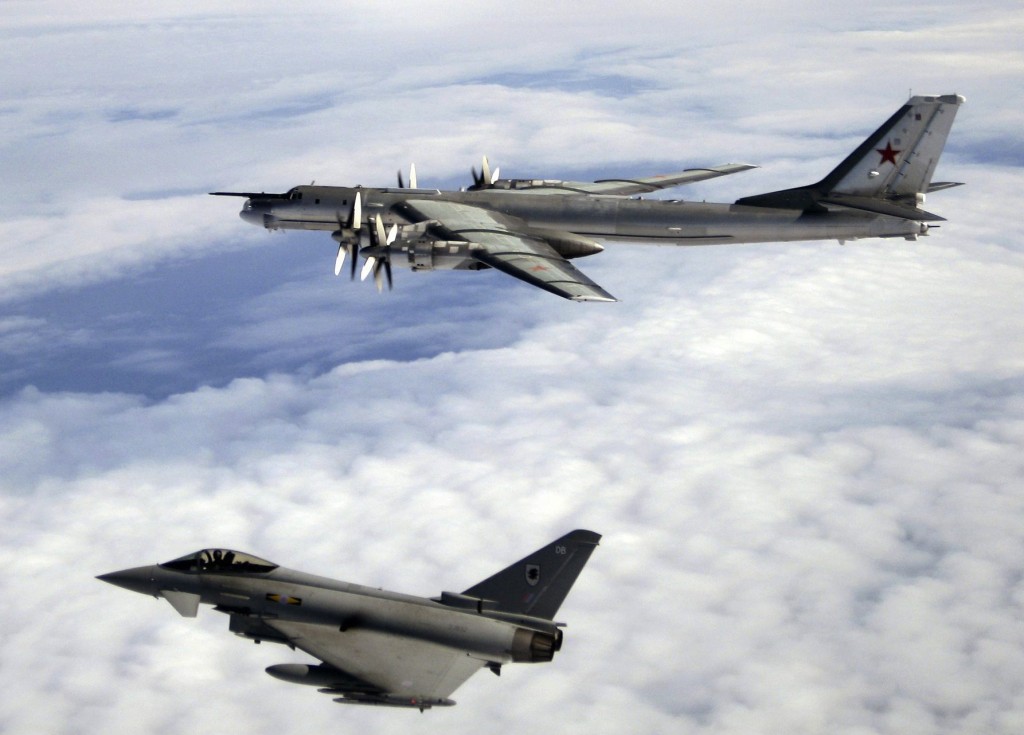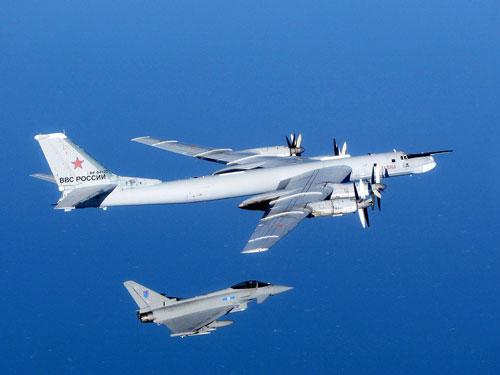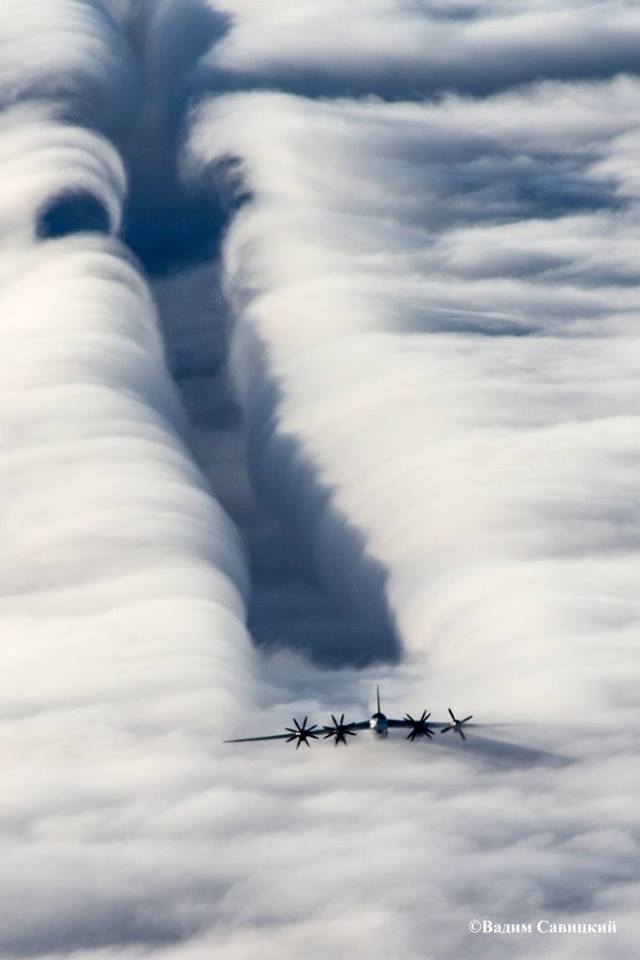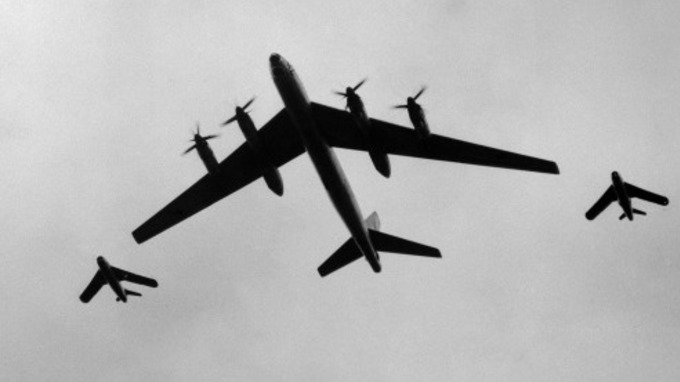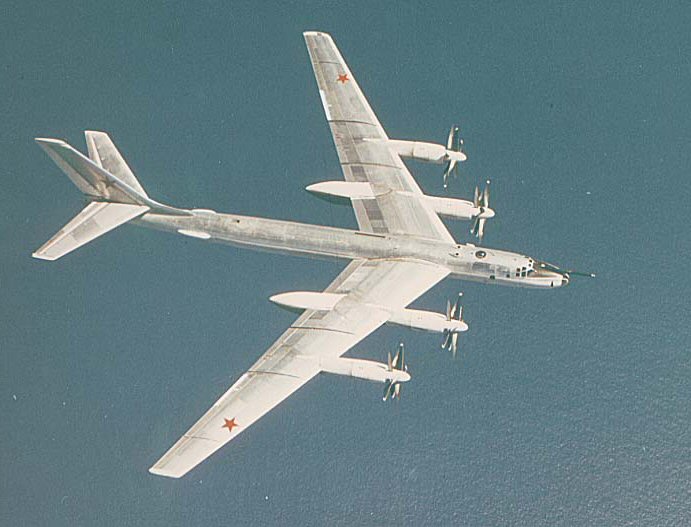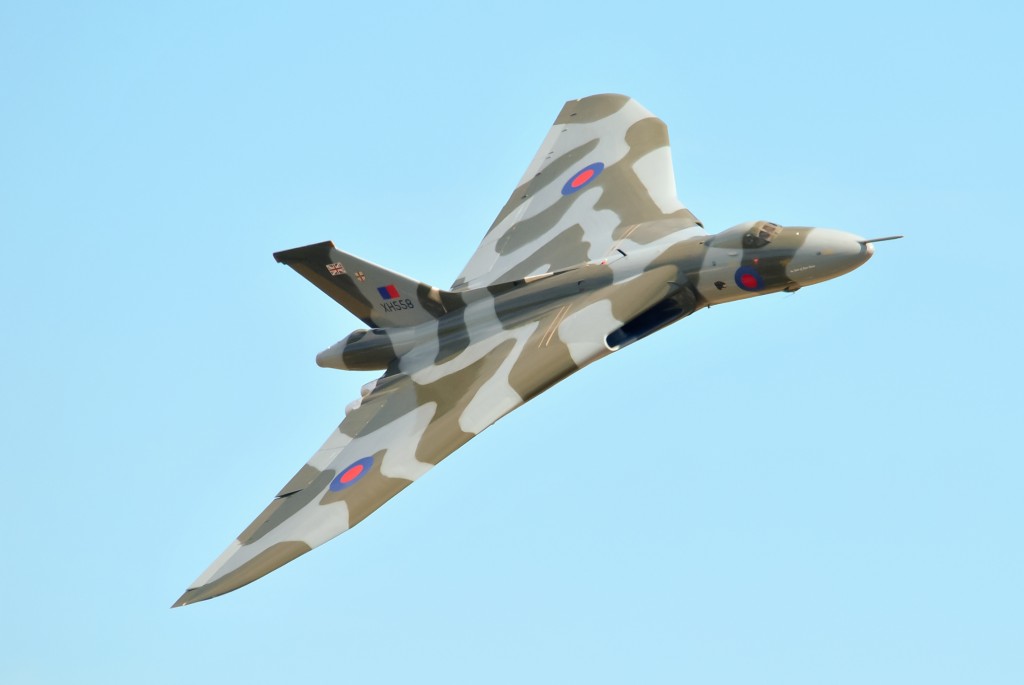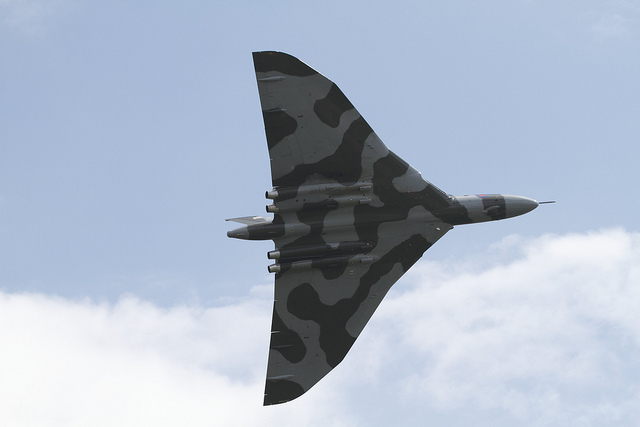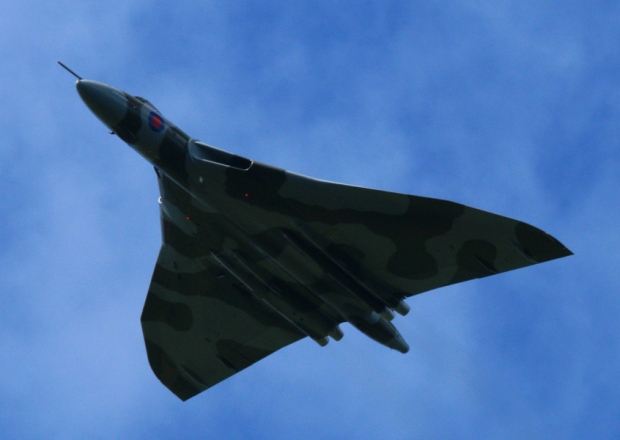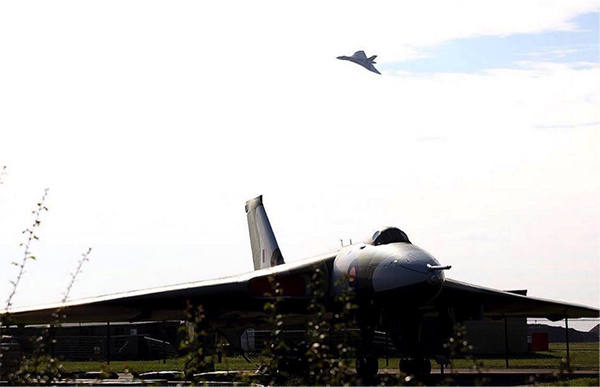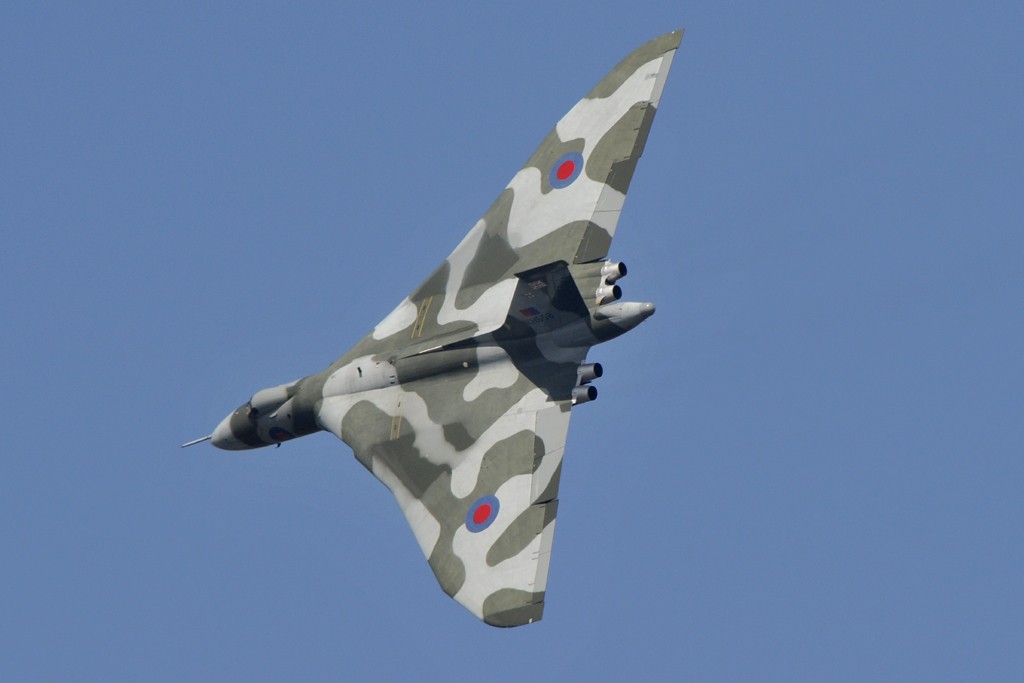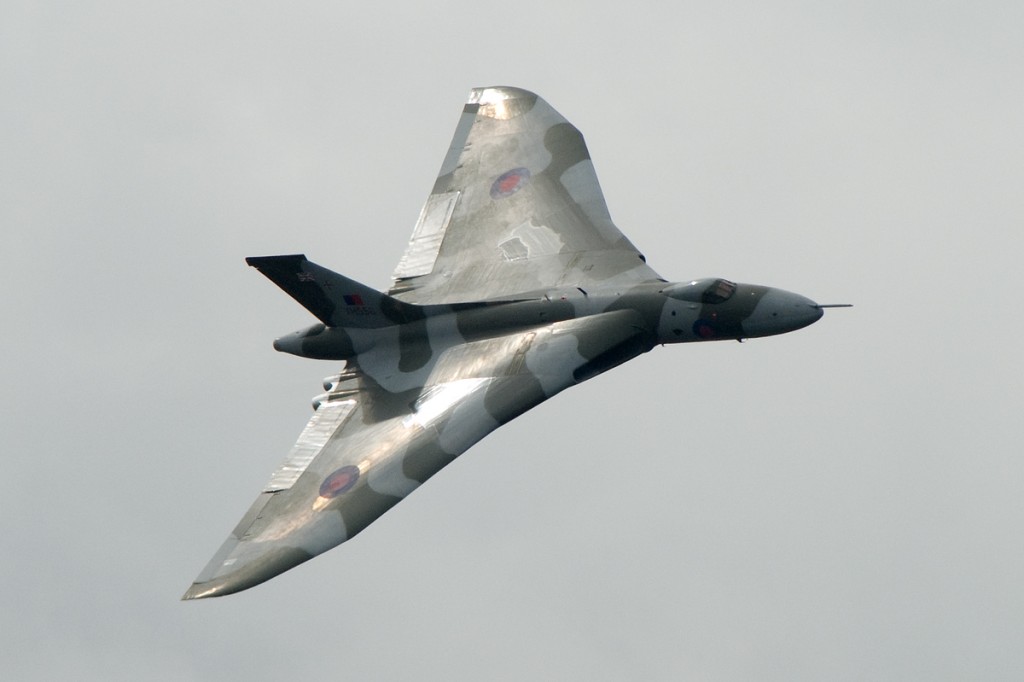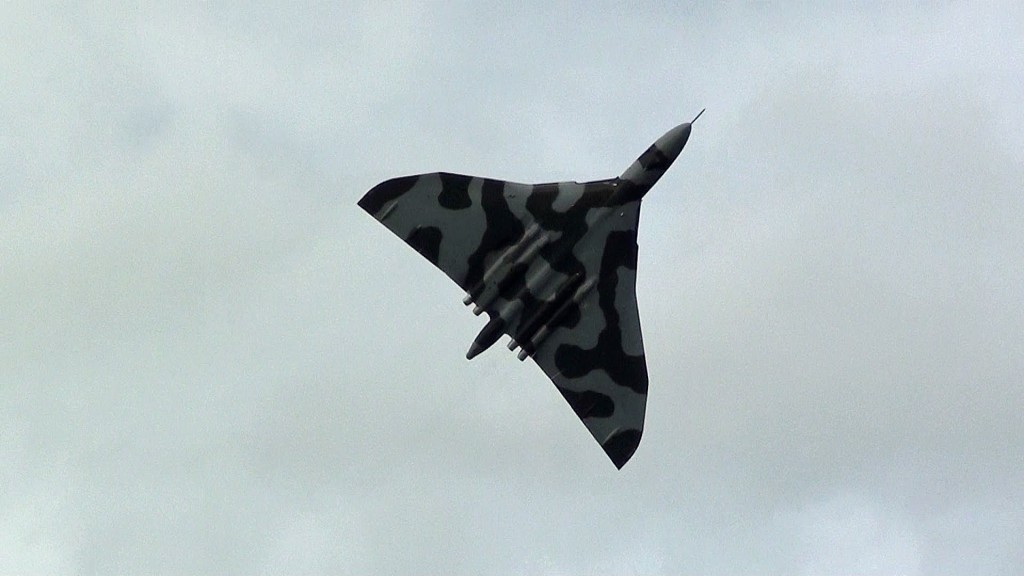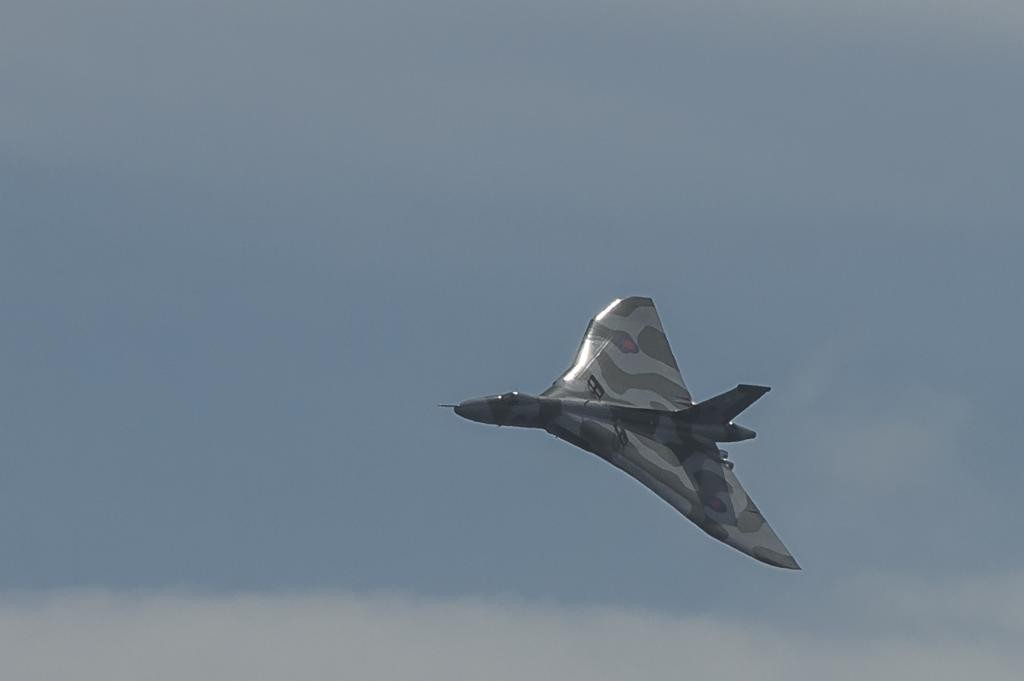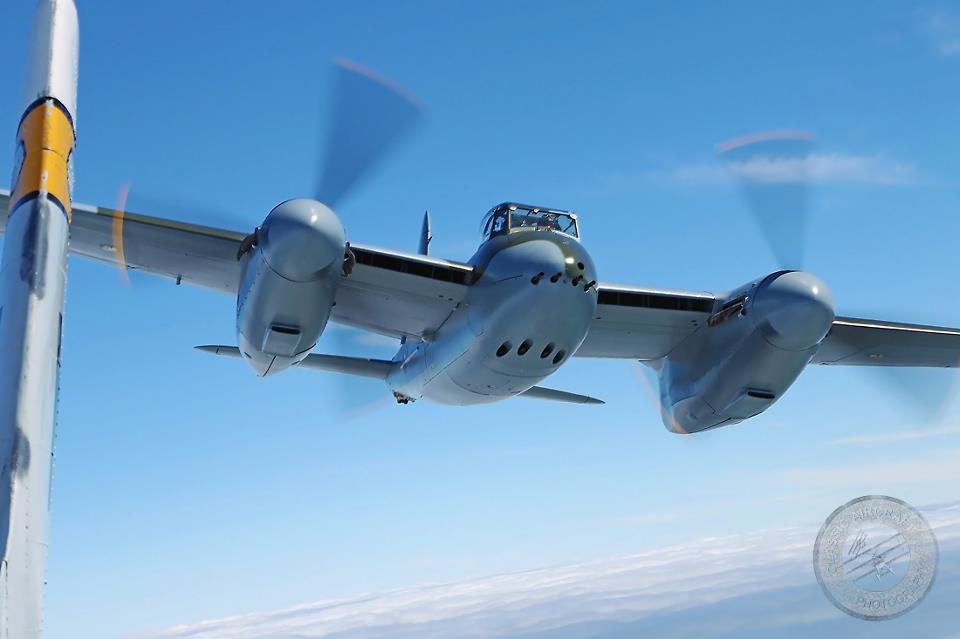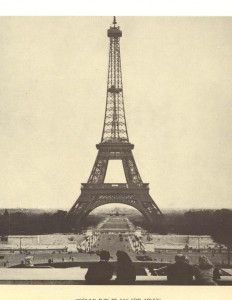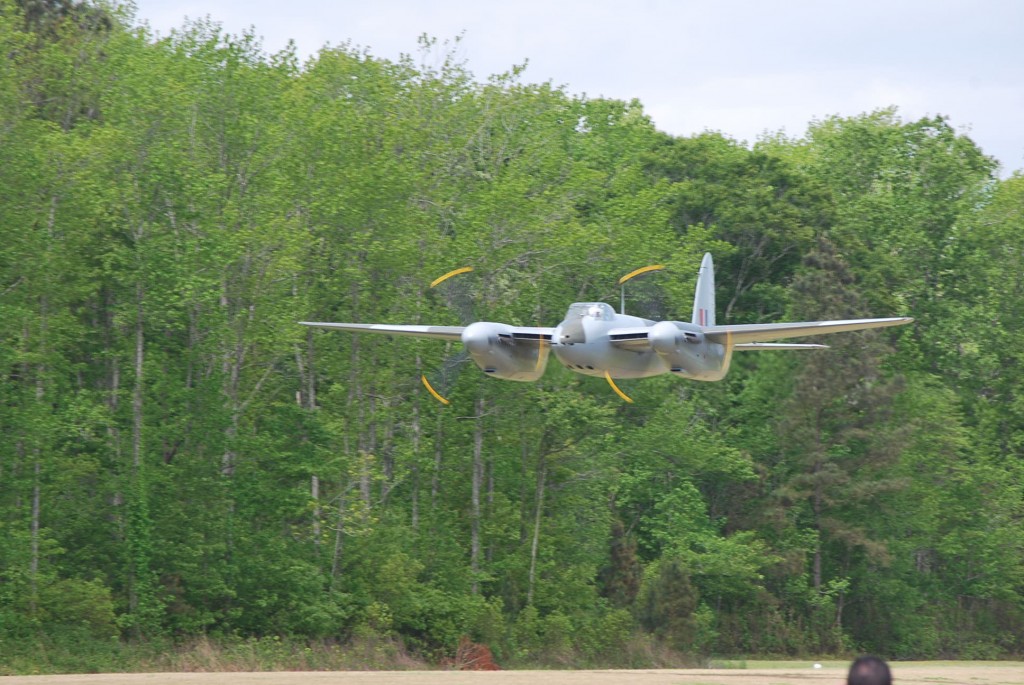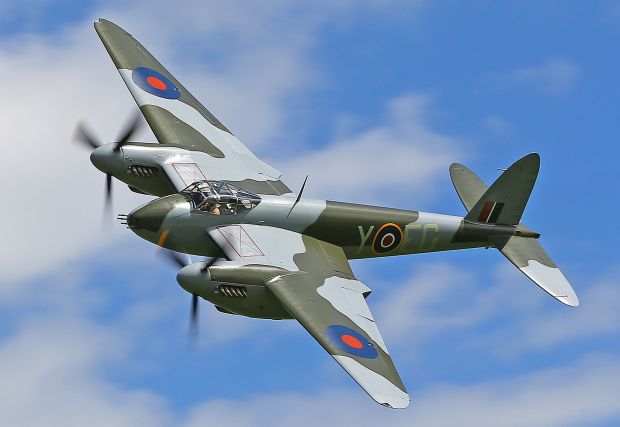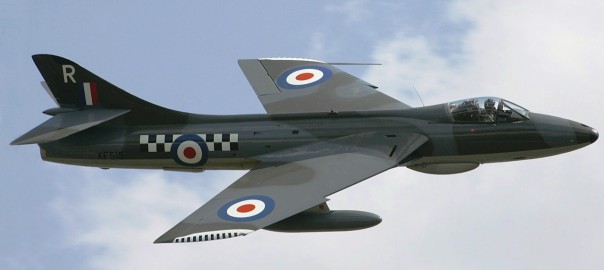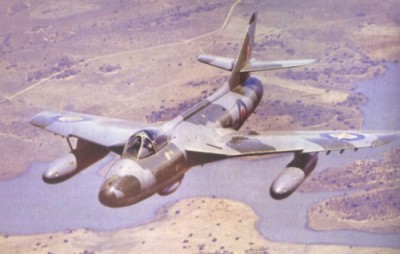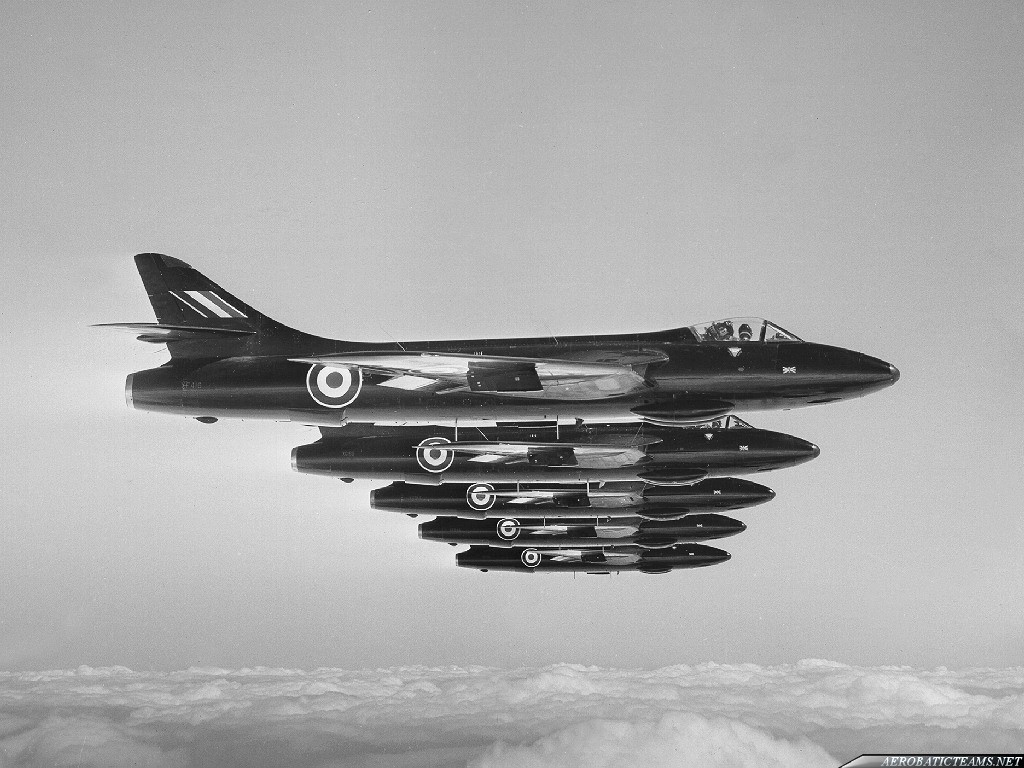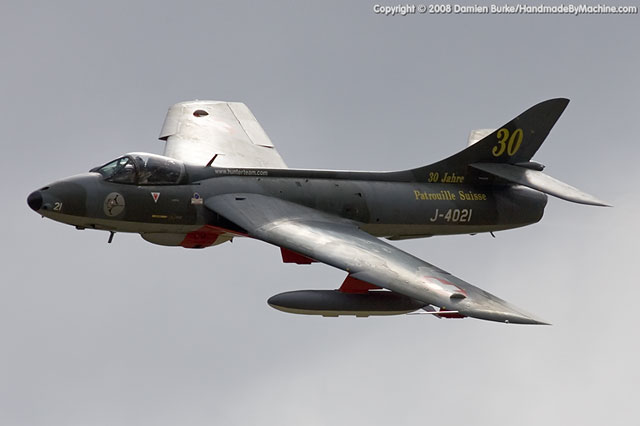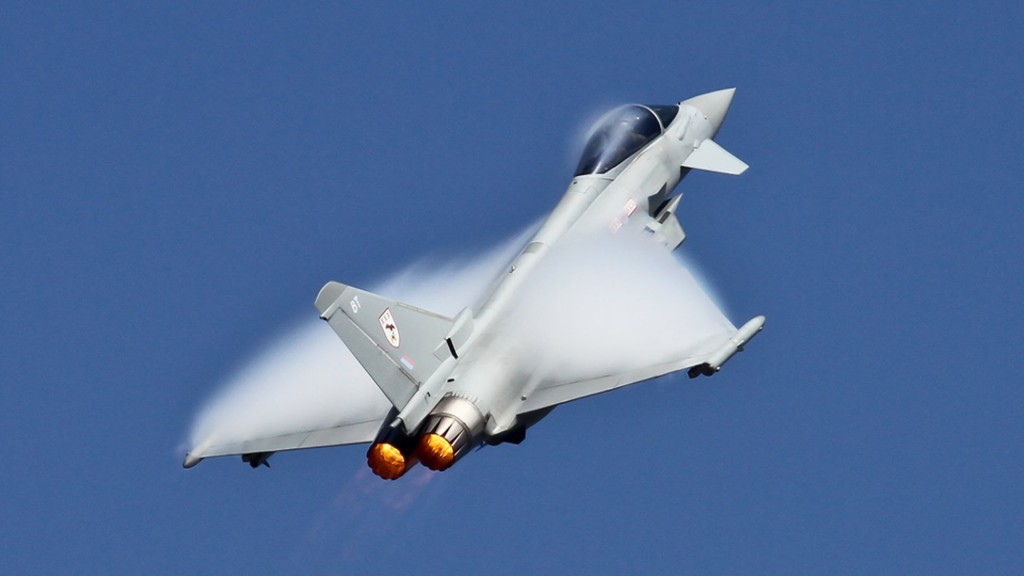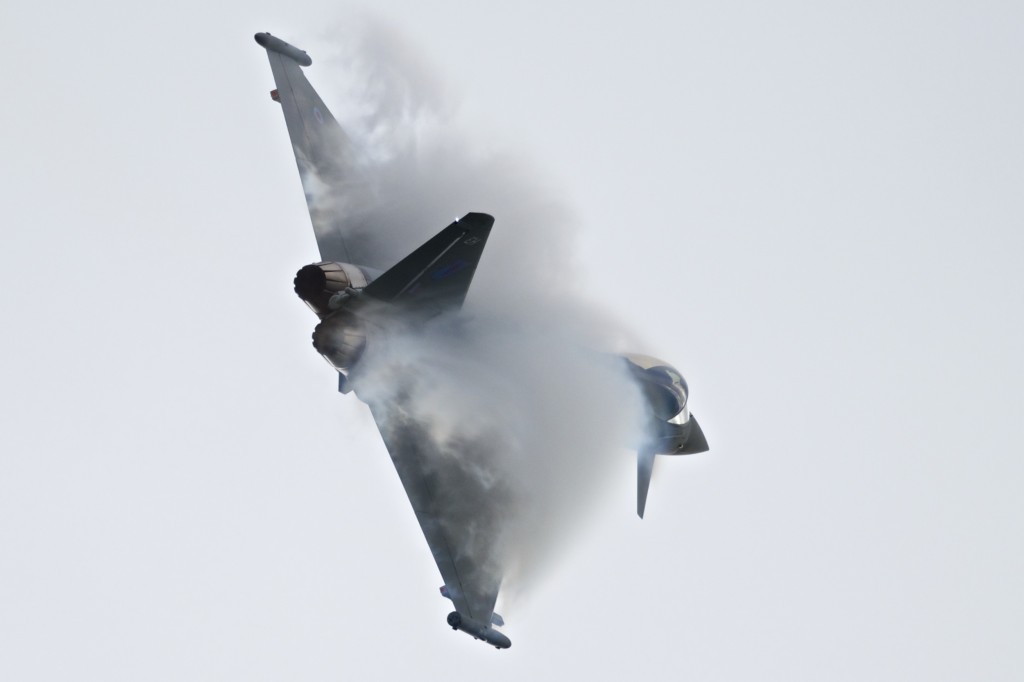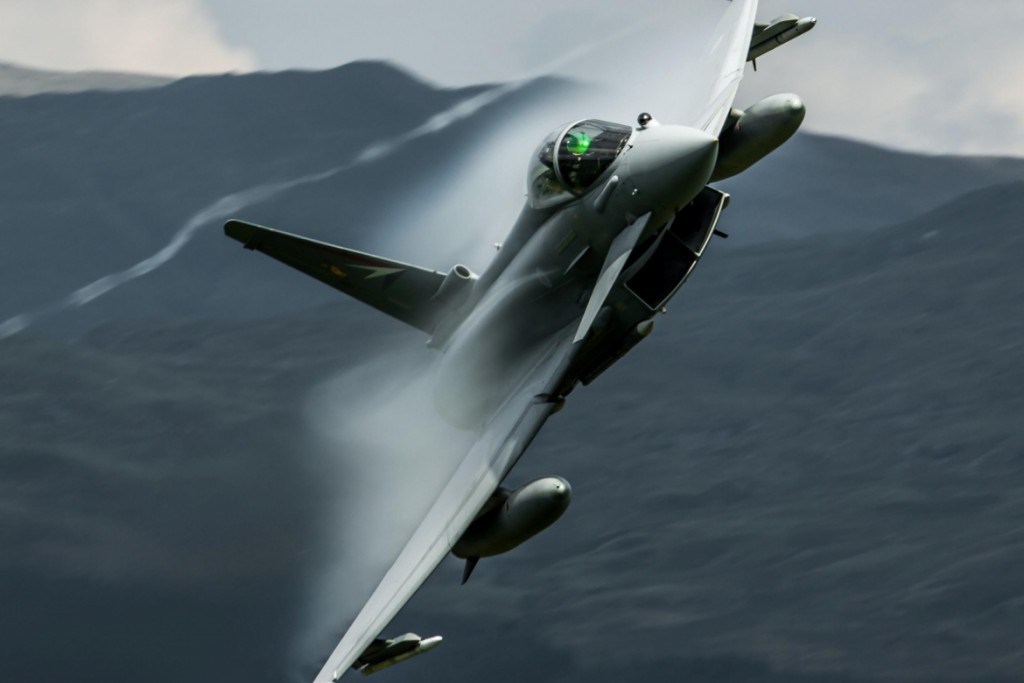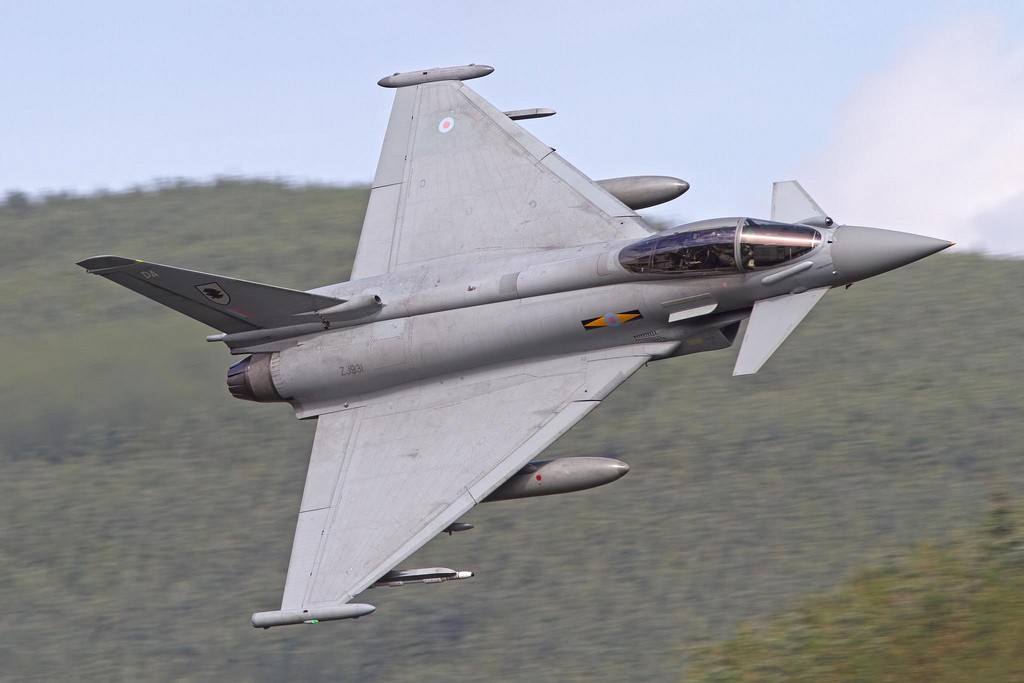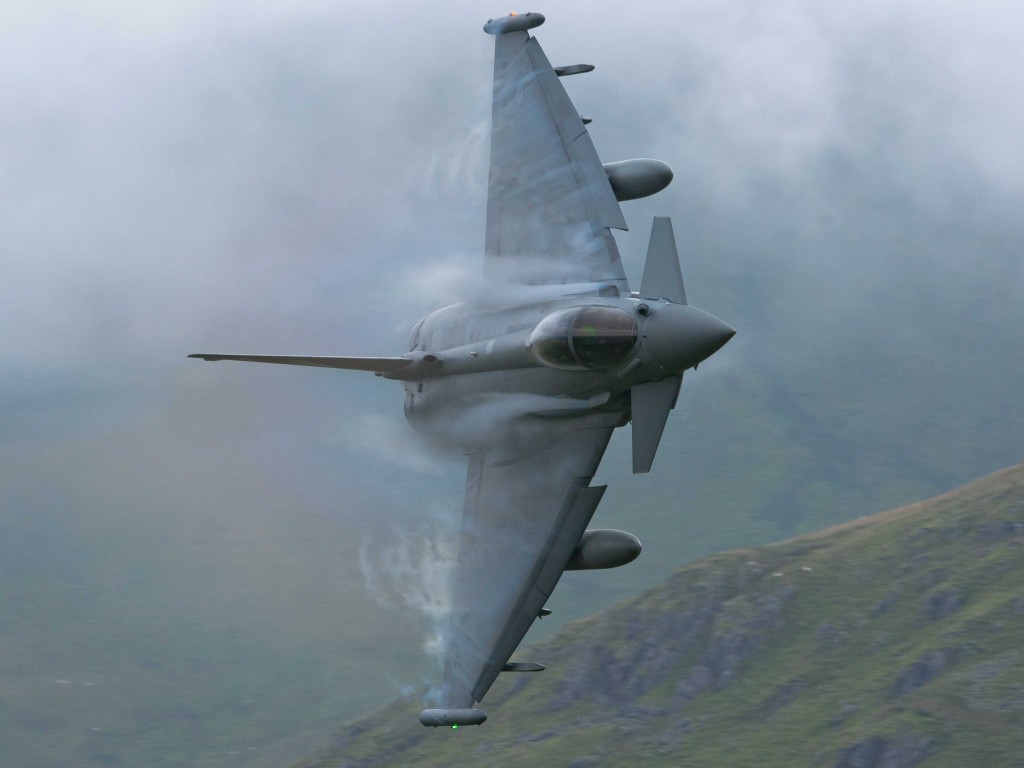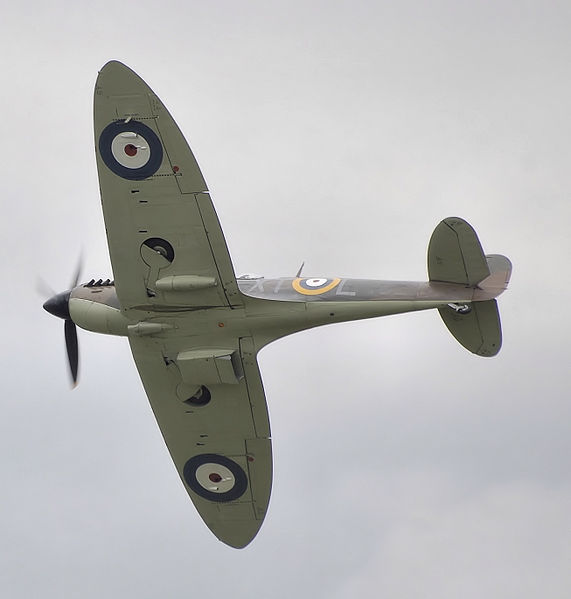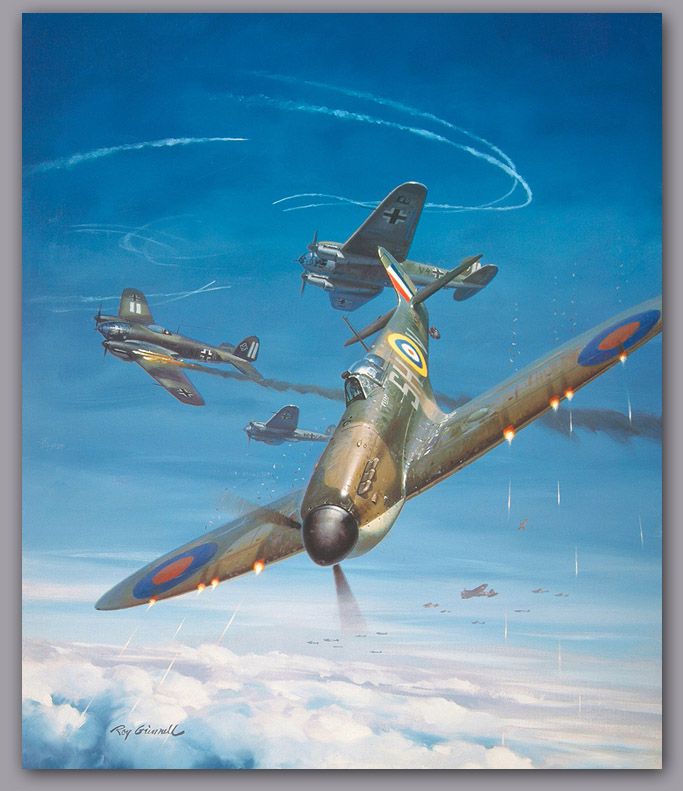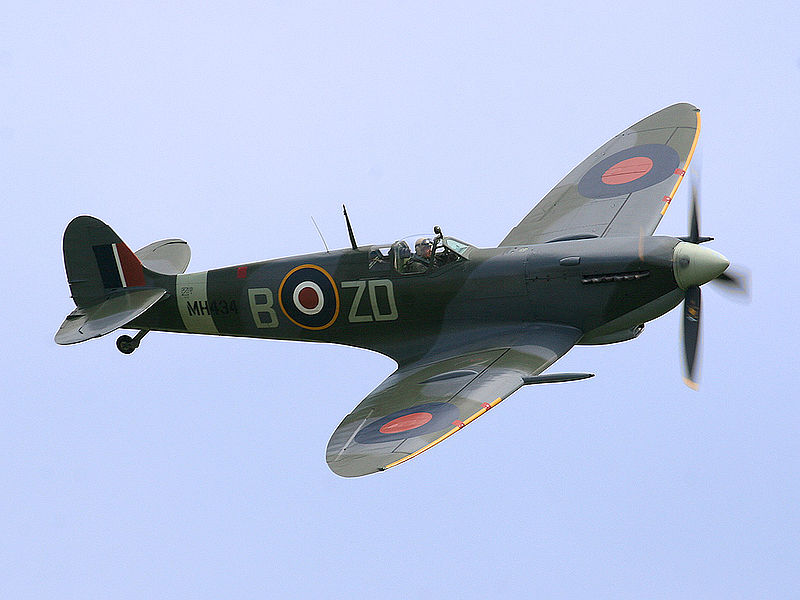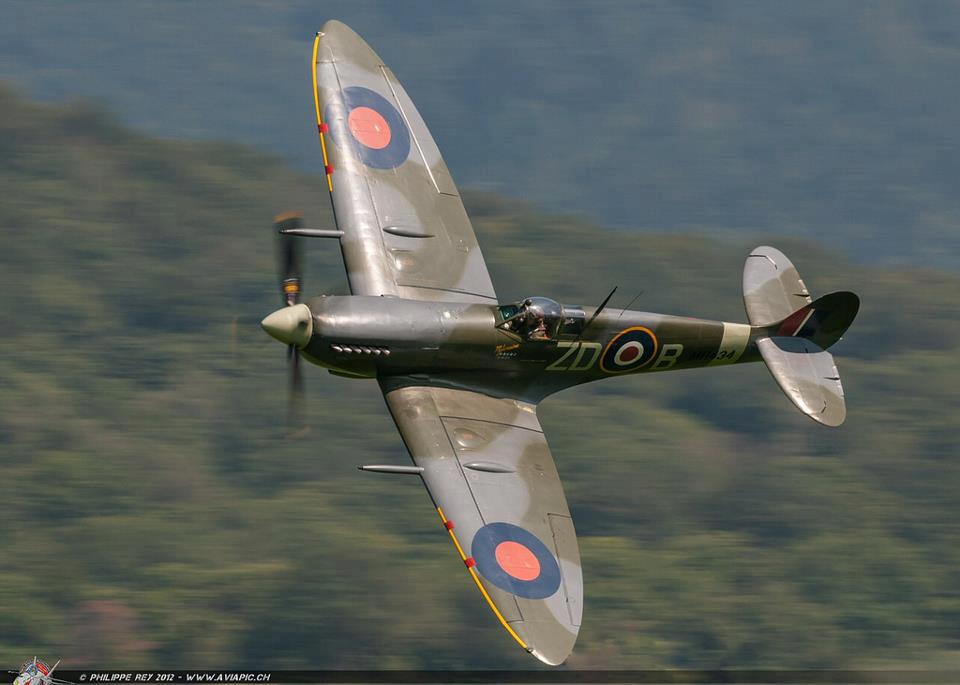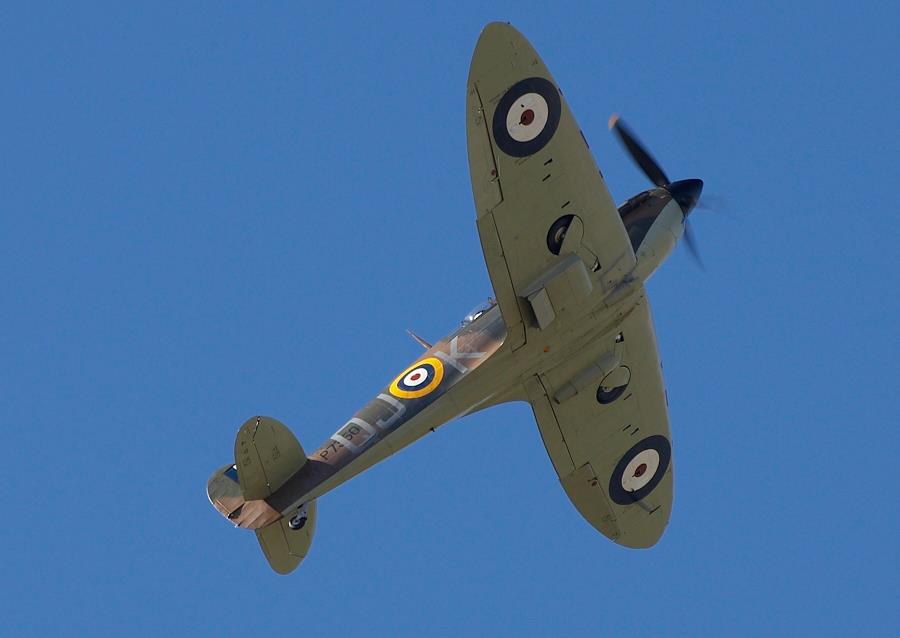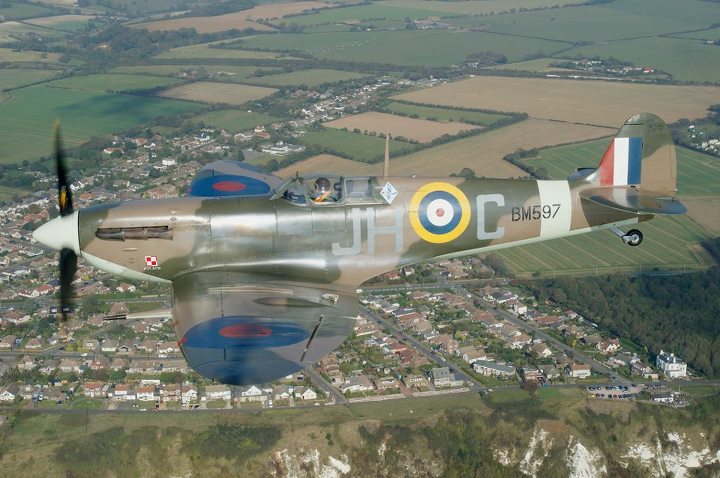The remarkable North American XB-70 Valkyrie was probably the most advanced aeroplane of its time. It was conceived and designed not long after the Second World War as a high-speed (Mach 3+), high-altitude (70,000ft+) bomber capable of striking targets in the USSR from bases in the USA.
The idea of a bomber aircraft’s design is to enable it to get through to its target, and then deliver its weapons effectively. Since the beginning of the history of bomber aircraft, then, they had been designed to fly ever higher and ever faster, in order to ensure penetration of enemy air defences to reach their targets – the idea being that the faster and higher you flew, the less exposure you had to your target’s defences. Traditional air defences up until the late 1950’s consisted of anti-aircraft artillery (AAA) – meaning basically guns, also known as ‘flak’ – and manned interceptor aircraft. Already, by the end of the Second World War, designers of such defences recognised that high-flying jet aircraft would be almost completely immune to ground-based guns; the idea then behind making the XB-70 such a fast aircraft, as well as being high-flying, would be to also render it virtually immune to interception by manned aircraft. There are technical reasons for this that I will not go into right now*, but basically it would have meant that this aeroplane would have been unstoppable in its mission.
So, the XB-70 was designed to fly so high and so fast that nothing would be able to stop it from reaching its target.
You can be forgiven for noticing that there’s a lot of smoke! The XB-70 was powered by no less than six afterburning turbojet engines, producing 28,800 pounds of thrust each with full reheat.
The XB-70 was capable of Mach 3 speeds (three times the speed of sound or about 2,100mph) and altitudes in excess of 70,000 feet. An interesting (and as far as I know, unique) feature of the type was its ‘drooping’ wingtips, shown in the pictures below:
This feature gave several aerodynamic benefits, the most unusual of which was to compress the supersonic shockwave (essentially the phenomenon that causes the ‘sonic boom’) under the aircraft to produce extra lift, known as ‘compression lift‘. This increases the aerodynamic efficiency of the aircraft at higher speeds.
Sadly, though, the XB-70 programme was cancelled because of developments in Soviet surface-to-air missile (SAM) technology. Because of the effectiveness and high performance of the Soviet SAMs, speed and altitude were no longer necessarily an adequate defence against being shot down. The era of the ‘unstoppable’ fast and high-flying bomber was at an end; from now on, the principal tactic for a bomber to ‘get through’ would now be to go in at very low level, ‘under the radar’, which is why there is so much emphasis on practising low-level flying in today’s air forces. The XB-70’s performance was no longer going to help her ‘get through’, and other aircraft such as the Boeing B-52 could do the job, but at low level. So the XB-70 was no longer required and the program was cancelled.
However, the type had a temporary respite: because of its performance, which was right out on the limits of what was then (and even now!) possible, the two examples of the aircraft that had been built were adopted by NASA to explore the limits of aerodynamics in the kinds of high and fast flight regimes that the XB-70 was capable of.
Despite a double-fatality mid-air collision in 1966 with an F-104 fighter, which destroyed one of the XB-70s, the remaining example continued as a research platform until 1969, when she was retired and placed in a museum.
Even on her final flight to the museum, they used the flight to gather yet more research data! So I guess you could say that there was still life in the old girl even then….
So there she is: the XB-70 Valkyrie, a graceful, beautiful (if a little unusual-looking) aircraft that, despite her advanced and indeed totally awesome performance, was obsolete before she was able to really come into her own. What a gorgeous Beautiful Destroyer.
[Edit: I have just found this very informative YouTube video on the XB-70. If you can get past the over-dramatic music that most of these documentaries are plagued with, and if you can ignore the ‘face shots’ where the camera zooms in on the aircraft’s ‘face’ (the nose) like they would for a politician or someone, then it’s very good. Certainly it has footage I have never seen before. Take a look:
*The reasons why manned interceptor aircraft would not easily be able to catch the XB-70 are several-fold.
Firstly, it is to do with radar detection: aircraft travelling at extremely high speeds are difficult to track on radar and hence it would make it harder for fighter controllers to give correct guidance (known as ‘vectoring‘) to their interceptors; also, the time spent in range of each radar station would be drastically reduced (at Mach 3 (three times the speed of sound), an aeroplane travels a mile in just under two seconds) and so the controllers would have insufficient time and/or co-ordination to be able to vector their interceptors to the bomber. And even then, this is assuming everything is up to scratch and working properly; in the event of the kind of war that the XB-70 was designed to fight in, there would be anything but this kind of efficiency. There would be radar jamming, there would be power failures and communications breakdowns, there would be nuclear weapons popping off all over the place, which would cause electrical system failures for several reasons, many of which would be unavoidable. These problems all compound the difficulties faced by the radar controllers.
Secondly, it is to do with the performance of the interceptors themselves. Even given adequate warning by radar, and efficient vectoring by fighter controllers, even the fastest and highest-performance jet fighters would have a hard time in both climbing to the bomber’s operating altitude – which many of them couldn’t anyway – and also to catch the bomber, which they couldn’t do in a ‘stern chase’ (trying to catch up from behind) because they weren’t fast enough, and for a head-on attack they would have to get to altitude well in advance of the bomber (which they couldn’t do because that requires far more space and time than would be available given the radar warning time), and even if they could position themselves properly, attacking a Mach 3 target in a head-on pass using the weapons of the time would not give a good probability of shooting it down. And of course there’s the tactical and strategic environment described above, which would compound the intercept problems considerably. This, then, is why the Valkyrie would have been immune to fighter interception.
In fact, the Soviet interceptor known as the MiG-25 ‘Foxbat’ – the fastest-ever manned interceptor – was designed primarily as a response to the XB-70. You can find out more about it by clicking this link. No doubt the MiG-25 will turn up in this series soon, as it too is another amazing aeroplane! 🙂
Edit: Here is anoher interesting article on the XB-70 Valkyrie on the blog ‘This Day in Aviation’. Well worth a read if you are at all interested in this magnificent aeroplane.

